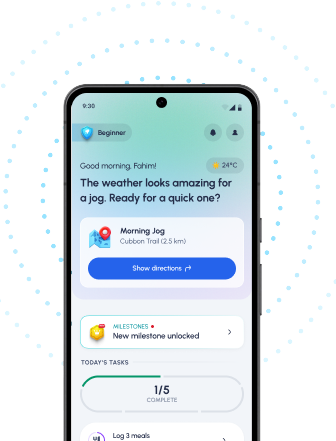Table of Contents
- Diabetes-Friendly Recipes Kids Will Love
- Healthy Eating Habits for Children with Diabetes
- A Parent’s Guide to Managing Childhood Diabetes Through Diet
- Understanding Carbohydrate Counting for Kids with Diabetes
- Simple Swaps: Making Kid-Friendly Meals Diabetes-Safe
- Frequently Asked Questions
- References
Is your child living with diabetes? Navigating healthy eating can feel overwhelming, but it doesn’t have to be! This blog post is your guide to Diabetes-Friendly Nutrition for Kids, offering practical tips and delicious recipe ideas to help you manage your child’s blood sugar levels effectively. We’ll explore simple strategies to make healthy eating fun and enjoyable for the whole family, ensuring your child thrives while learning about balanced nutrition. Learn how to empower your child and build healthy habits for a lifetime. Let’s get started!
Diabetes-Friendly Recipes Kids Will Love
Sweet Treats with a Twist
Managing diabetes in children requires careful attention to carbohydrate intake. While aiming for around 45-60 grams of carbs per meal is a general guideline (remember, individual needs vary, so consult your doctor or a registered dietitian), finding delicious and diabetes-friendly options can be a challenge. This is especially true in regions like India and other tropical countries where sweet treats are a significant part of the diet. Fortunately, many traditional recipes can be adapted. For example, instead of using refined sugar, try using jaggery or natural sweeteners like coconut sugar in moderation. Planning ahead for special occasions? Check out our guide on Creating Diabetes-Friendly Dishes for the Holidays for some inspiration.
Savory Sensations
Focus on incorporating plenty of vegetables and lean proteins into your child’s diet. Think flavorful curries with lentils (high in protein and fiber, aiding in blood sugar control) and plenty of non-starchy vegetables like spinach, cauliflower, and beans. These contribute to satiety and help manage carbohydrate intake. Use whole grains like brown rice or quinoa in moderation as a carbohydrate source. Consider exploring regional variations: using coconut milk in curries can add richness without excessive fat. For more ideas on incorporating the best foods into your child’s diet, explore our list of the 20 Best Foods for People with Diabetes.
Making it Fun
Presentation is key! Cut vegetables into fun shapes, involve your child in the cooking process, and create a positive association with healthy eating. Remember, consistent, balanced meals are more important than eliminating favorite foods entirely. Small, mindful adjustments, tailored to your child’s preferences and cultural context, can make all the difference in managing their diabetes effectively. Consult a doctor or registered dietitian for personalized guidance in your region.
Healthy Eating Habits for Children with Diabetes
Managing type 1 diabetes in children requires a careful approach to nutrition, especially in diverse regions like India and other tropical countries. Globally, over 1.2 million children and adolescents live with type 1 diabetes, according to the IDF Diabetes Atlas, highlighting the urgent need for accessible and culturally relevant dietary guidance. Healthy eating habits are crucial for managing blood sugar levels and promoting overall well-being.
Building a Diabetes-Friendly Diet Plan
For children with type 1 diabetes in tropical climates, incorporating locally available fruits and vegetables is key. Think fresh mangoes, papayas, and leafy greens abundant in many Indian and Southeast Asian markets. These provide essential vitamins and minerals while keeping carbohydrate intake balanced. Prioritize whole grains like brown rice and millets over refined carbohydrates, offering sustained energy and better blood sugar control. Lean proteins, such as lentils, chickpeas, and fish, are excellent choices, providing building blocks for growth without excessive fat.
Practical Tips for Parents
Portion control is vital. Work with your child’s doctor or a registered dietitian to create a personalized meal plan considering their age, activity level, and specific needs. Regular monitoring of blood glucose levels is essential, along with adjusting insulin dosages as needed. Involve your child in meal preparation and grocery shopping to foster healthy habits and empower them in managing their diabetes. Remember, consistency and a supportive environment are crucial for success. Seek support from local diabetes organizations or health professionals familiar with the specific dietary challenges in your region. For more comprehensive guidance, check out our Tips for Parents of Kids with Type 1 Diabetes: Complete Guide. Managing blood sugar effectively also involves careful meal planning; you might find our Diet Chart for Diabetic Patients to Control Diabetes helpful.
A Parent’s Guide to Managing Childhood Diabetes Through Diet
Managing childhood diabetes effectively requires a deep understanding of nutrition, especially in diverse regions like India and tropical countries. Approximately 35 per 1,000 U.S. youths have diagnosed diabetes, a statistic highlighting the global significance of this challenge. This underscores the importance of a tailored dietary approach for children with diabetes, considering cultural food preferences and readily available ingredients.
Understanding Carbohydrate Intake
Carbohydrate counting is crucial. This involves learning how different foods affect blood sugar levels. In India and tropical countries, rice, roti (flatbread), and various fruits are dietary staples. Parents need to understand how these impact their child’s blood glucose, adjusting portion sizes accordingly. Focus on complex carbohydrates like whole grains over refined ones, which offer more sustained energy release. As your child grows, remember that the strategies you learn now will be valuable for Managing Diabetes as You Age: Challenges and Solutions.
Incorporating Regional Foods
Many traditional Indian and tropical fruits and vegetables are naturally low in glycemic index (GI), making them ideal for managing blood sugar. Think of incorporating leafy greens, bitter gourd (karela), drumstick (moringa), and various lentils. These foods are not only diabetes-friendly but also rich in essential nutrients crucial for a child’s growth and development. Experiment with healthy recipes that incorporate these ingredients, making mealtimes enjoyable and culturally relevant. For more comprehensive strategies, check out our blog on 10 Proven Tips for Effective Diabetes Management.
Seeking Expert Guidance
Remember, consulting a registered dietitian or endocrinologist familiar with the dietary needs specific to your region is paramount. They can provide personalized recommendations based on your child’s unique needs and cultural context. Don’t hesitate to seek support groups for parents of children with diabetes; sharing experiences and learning from others can be incredibly beneficial. Early intervention and consistent management are key to ensuring a healthy life for your child.
Understanding Carbohydrate Counting for Kids with Diabetes
Managing diabetes in children requires a careful approach, especially when it comes to nutrition. A recent Indian study revealed that 1.467% of school children screened showed signs of diabetes (1,351 out of 92,047), highlighting the urgent need for parental awareness and proactive management strategies. This statistic underscores the importance of understanding carbohydrate counting, a crucial element in controlling blood sugar levels.
What is Carbohydrate Counting?
Carbohydrate counting involves tracking the amount of carbohydrates your child consumes at each meal and snack. This is vital because carbohydrates break down into glucose, directly impacting blood sugar levels. Understanding portion sizes and the carbohydrate content of common Indian foods, such as rice, roti, fruits, and sweets, is key. It’s not about eliminating carbs entirely, but about managing their intake effectively.
Practical Tips for Indian Families:
* Focus on complex carbohydrates: Opt for whole grains like brown rice and whole wheat roti over refined grains. These digest slower, leading to more stable blood sugar levels.
* Portion control: Even healthy carbs need to be consumed in moderation. Use smaller plates and be mindful of serving sizes.
* Include fiber-rich foods: Fruits, vegetables, and lentils are rich in fiber, which helps regulate blood sugar. Many readily available tropical fruits can be incorporated into a diabetes-friendly diet.
* Regular monitoring: Regular blood glucose monitoring helps you understand your child’s response to different foods and adjust their carbohydrate intake accordingly.
Learning to effectively manage carbohydrate intake is a cornerstone of diabetes management for children in India and other tropical regions. It’s also important to understand the link between diabetes and obesity, as weight management plays a crucial role. For more information, read our article on Understanding the Link Between Diabetes and Obesity. Consult a healthcare professional or a registered dietitian for personalized guidance and support tailored to your child’s specific needs and dietary preferences. Early intervention and consistent effort can significantly improve your child’s health and quality of life. Managing cholesterol is another important aspect of diabetes management; learn more about How to Manage Cholesterol Levels with Diabetes?
Simple Swaps: Making Kid-Friendly Meals Diabetes-Safe
Understanding the Challenge
Raising children with diabetes, especially in Indian and tropical countries, presents unique challenges. The high prevalence of diabetes in these regions, as highlighted by the International Diabetes Federation’s Diabetes Atlas (showing that over 75% of people with diabetes live in low- and middle-income countries), underscores the need for accessible and culturally relevant dietary advice. Making healthy choices often requires creative substitutions within familiar meals.
Smart Swaps for Healthy Eating
Instead of relying on sugary drinks and processed foods, focus on simple swaps that maintain the deliciousness while improving nutritional value. Replace sugary sodas with fresh fruit juices diluted with water or homemade lassi (yogurt drink). Swap white rice for brown rice or bajra (pearl millet) for a significant fiber boost. Incorporate lentils (dal) and vegetables liberally into curries and stews, providing essential protein and micronutrients. Choose whole-wheat roti over refined flour options. For more ideas on simple substitutions that benefit your overall health, check out our blog on Easy Diet Swaps to Improve Your Nutrition.
Sweet Treats with a Twist
Satisfy your child’s sweet tooth with naturally sweet options like fresh fruits, particularly mangoes, bananas, and papayas, abundant in many tropical regions. Consider making kheer (rice pudding) with less sugar and substituting some of the rice with healthier alternatives like quinoa.
Actionable Steps for Indian Families
Remember: small changes make a big difference. Start by gradually introducing these swaps into your child’s diet. Involve them in the process of choosing and preparing healthy meals to foster healthier eating habits. Consult a nutritionist or a diabetes specialist for personalized dietary plans tailored to your child’s needs and cultural context. It’s also important to be mindful of supplements; learn more about Safe and Effective Dietary Supplements for Diabetes Care.
Frequently Asked Questions on Kids Diabetes Diet
Q1. What are the key dietary principles for managing childhood diabetes in India?
Focus on balanced meals with controlled carbohydrates. Choose complex carbohydrates like brown rice and whole grains. Include lean proteins (lentils, chickpeas, fish), fiber-rich vegetables, and fruits (mangoes, papayas). Portion control is essential.
Q2. How can I make healthy eating culturally relevant and engaging for my child?
Incorporate familiar Indian foods into the meal plan. Involve your child in meal preparation to foster healthy habits. Make simple swaps, like replacing sugary drinks with diluted fruit juices and white rice with brown rice.
Q3. What role does professional guidance play in managing my child’s diabetes through diet?
Working with a dietitian and endocrinologist familiar with regional dietary needs in India is crucial for creating a personalized meal plan and ensuring effective diabetes management.
Q4. What are some common concerns or misconceptions about diabetes-friendly diets for children?
A common misconception is that children with diabetes must avoid all sweets and carbohydrates. The key is portion control and choosing healthier carbohydrate options.
Q5. How important is regular blood glucose monitoring in this process?
Regular blood glucose monitoring is vital for tracking progress, adjusting the meal plan as needed, and ensuring long-term health. Consistent management is key.
References
- Children with Diabetes : A resourse guide for families and school. : https://www.health.ny.gov/publications/0944.pdf
- A Practical Guide to Integrated Type 2 Diabetes Care: https://www.hse.ie/eng/services/list/2/primarycare/east-coast-diabetes-service/management-of-type-2-diabetes/diabetes-and-pregnancy/icgp-guide-to-integrated-type-2.pdf




